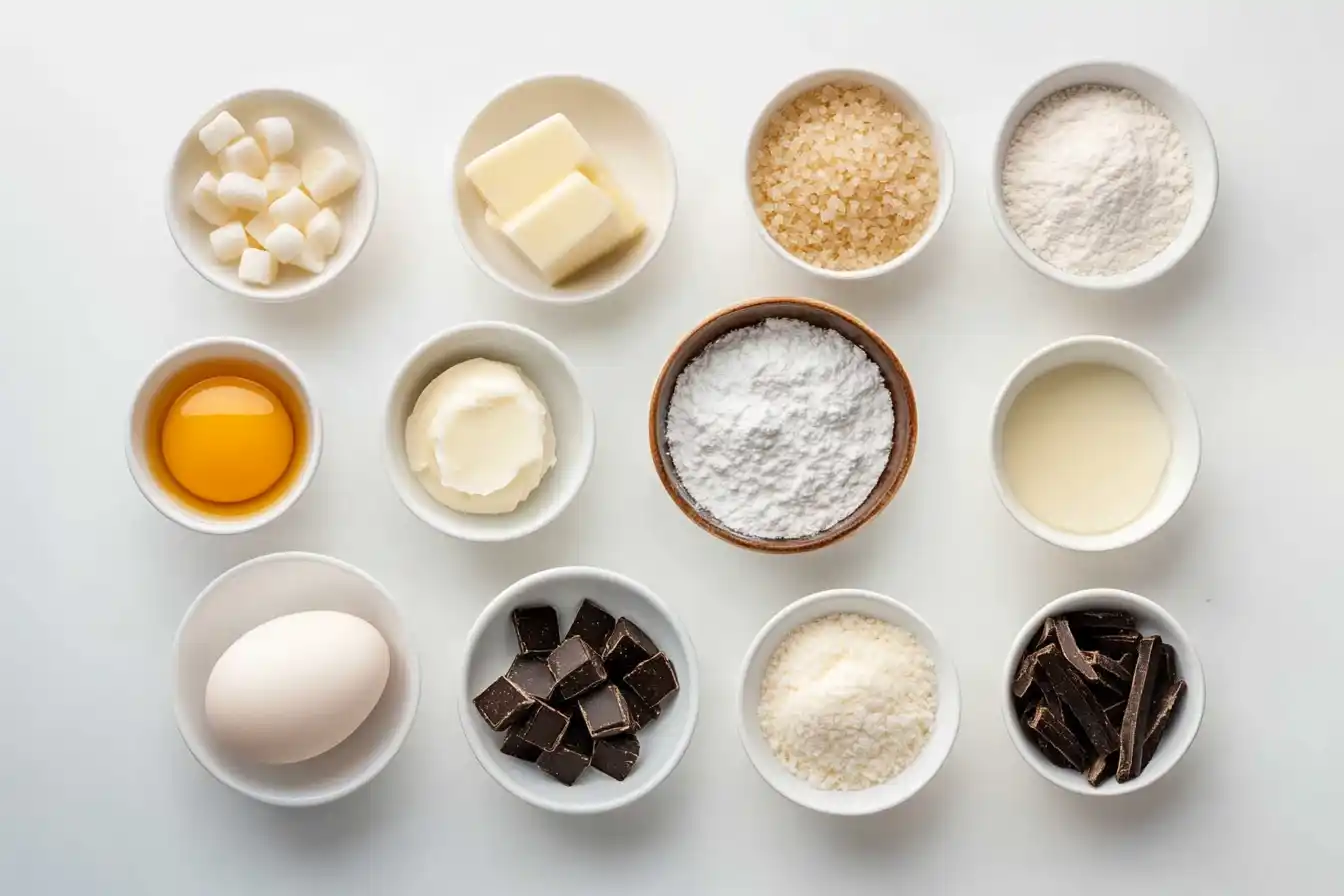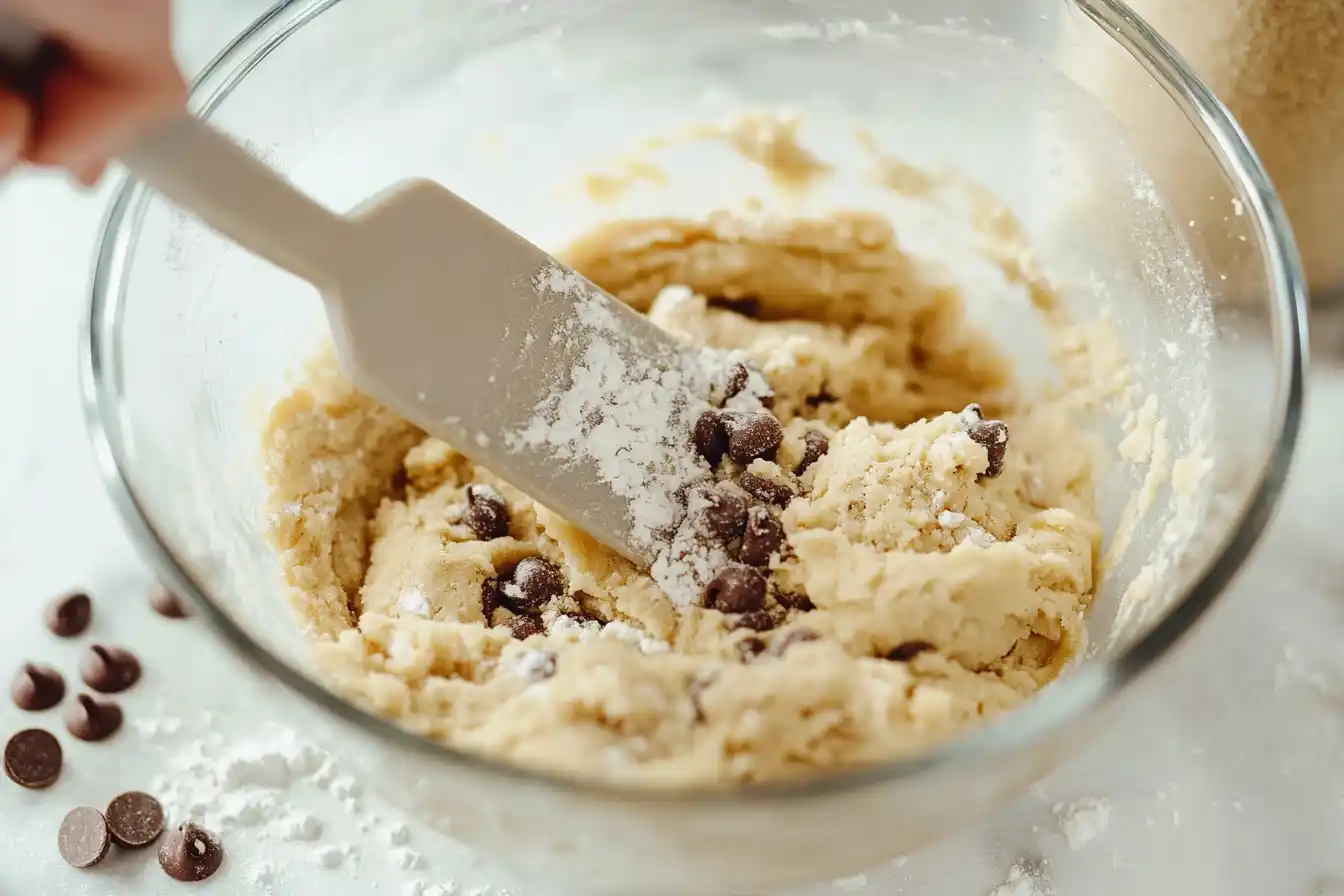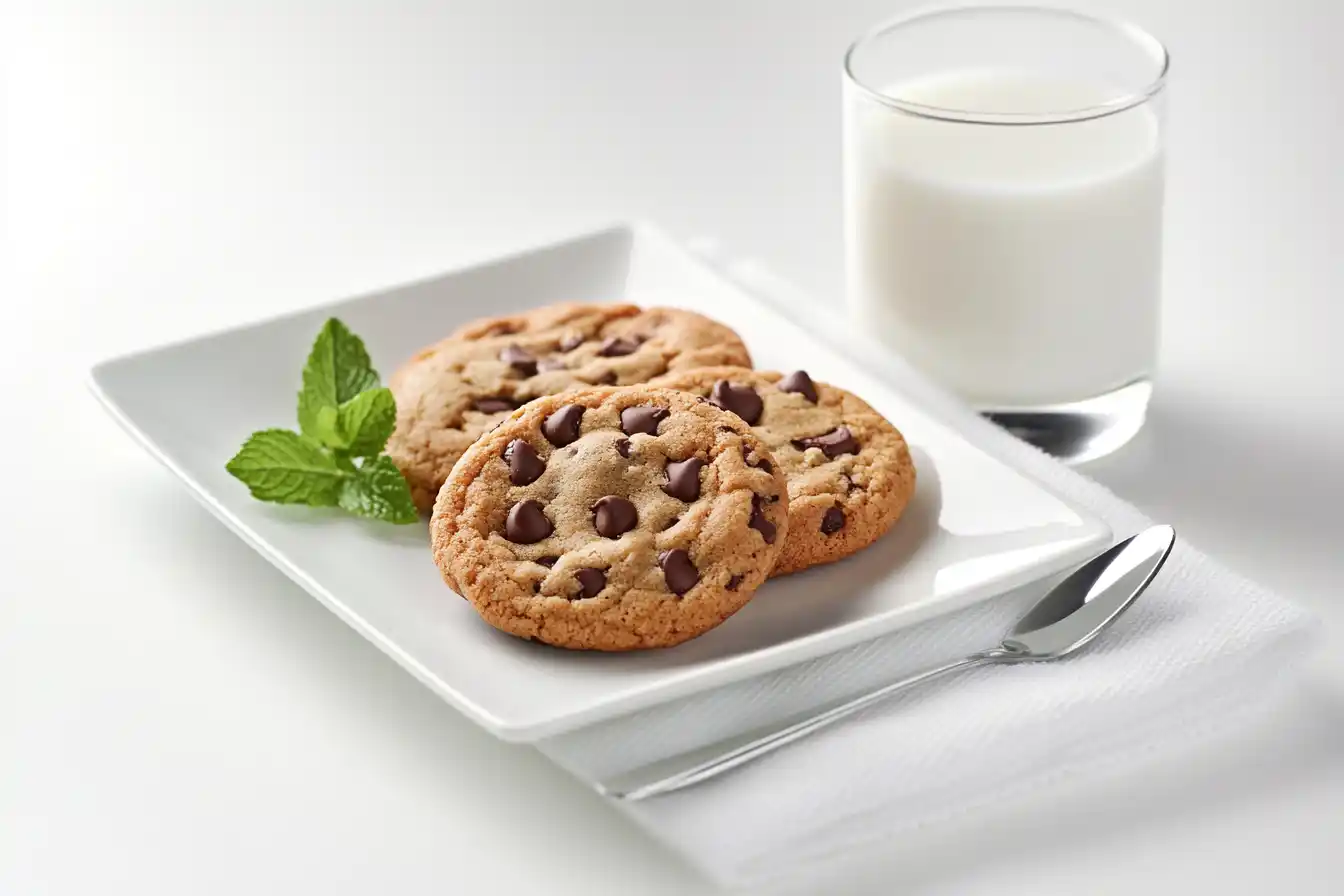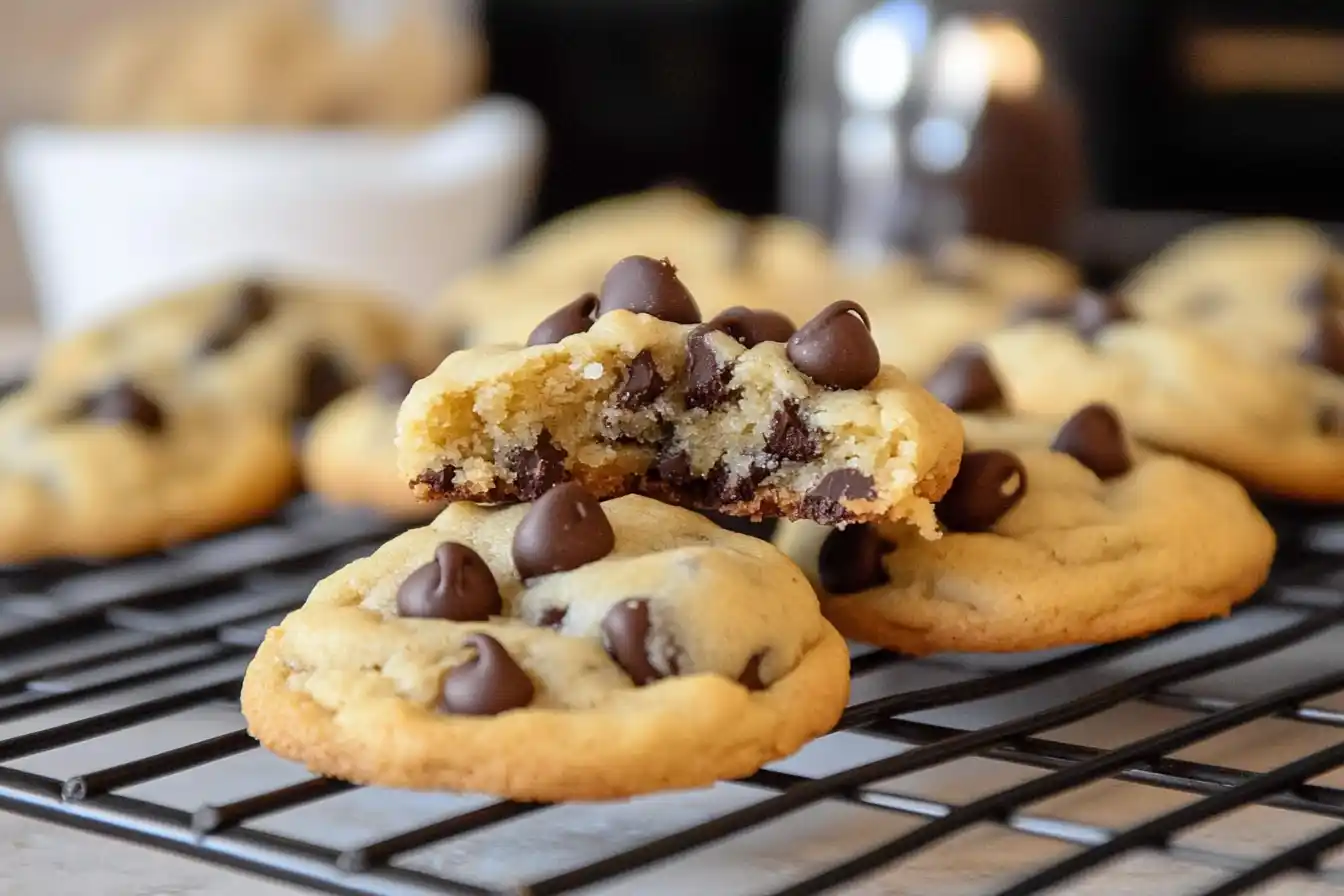Who doesn’t love the smell of freshly baked chocolate chip cookies wafting through the kitchen? That warm, buttery aroma mixed with the sweet scent of melting chocolate is enough to make anyone’s day better. But let’s be real—sometimes you don’t need a mountain of cookies tempting you every time you walk past the kitchen counter. Enter small batch chocolate chip cookies: the perfect solution for when you want just enough to satisfy your craving without overdoing it.
Small batch baking is like having a mini baking adventure. It’s quick, it’s fun, and it’s perfect for those moments when you want a treat without the commitment of a full-blown baking session. Whether you’re baking for one, two, or a small group of friends, small batch cookies are the way to go. Plus, they’re a lifesaver when you’re short on time or ingredients.
But why stop at just any cookie? Chocolate chip cookies are the ultimate classic, and making them in small batches ensures they’re always fresh, warm, and gooey. In this guide, we’ll dive into everything you need to know about small batch chocolate chip cookies—from the history of this iconic treat to the science behind baking the perfect batch. We’ll also tackle common problems (like flat cookies or dough that’s too crumbly) and share tips to make your cookies truly unforgettable.
Table of Contents
Why Small Batch Baking is Perfect for Chocolate Chip Cookies
Small batch baking is like the espresso shot of the baking world—small but mighty. It’s ideal for chocolate chip cookies because it allows you to focus on quality over quantity. When you’re making just a few cookies, you can pay attention to every detail, from the texture of the dough to the distribution of chocolate chips. Plus, it’s a great way to experiment with flavors and techniques without ending up with dozens of cookies you don’t know what to do with.
Think about it: when was the last time you baked a full batch of cookies and actually finished them all before they went stale? With small batch baking, you get all the joy of baking without the guilt of wasting food. And let’s not forget the convenience factor—small batches mean less prep time, less cleanup, and more time to enjoy your cookies.
The Joy of Freshly Baked Cookies in Small Quantities
There’s something magical about pulling a tray of freshly baked cookies out of the oven. The edges are golden brown, the chocolate is still gooey, and the smell is absolutely irresistible. Now imagine that experience, but on a smaller scale. Small batch chocolate chip cookies let you enjoy that moment of baking bliss without the overwhelm of a huge batch.
And let’s be honest—cookies are always best when they’re fresh out of the oven. With small batch baking, you can enjoy that fresh-baked goodness every time. No more stale cookies sitting in a jar for days. Just pure, warm, chocolatey perfection.
The History of Chocolate Chip Cookies
Before we dive into the nitty-gritty of baking, let’s take a quick trip down memory lane. Did you know that chocolate chip cookies were invented by accident? It’s true! Back in the 1930s, Ruth Wakefield, the owner of the Toll House Inn in Massachusetts, was trying to make a batch of butter cookies. She decided to add chopped-up bits of a Nestlé chocolate bar, thinking they would melt and create chocolate cookies. Instead, the chocolate bits held their shape, and the chocolate chip cookie was born.
“Ruth Wakefield’s accidental invention changed the baking world forever. Her recipe became so popular that Nestlé started printing it on their chocolate bars, and the rest is history.”
How Small Batch Baking Revolutionized Home Baking
Fast forward to today, and small batch baking has become a game-changer for home bakers. It’s all about making baking more accessible and less intimidating. With small batch recipes, you don’t need to be a professional baker to whip up a delicious treat. It’s perfect for beginners, busy folks, or anyone who just wants a little taste of something sweet.
Small batch baking also encourages creativity. When you’re not committed to a huge batch, you’re more likely to experiment with different ingredients and techniques. Want to try adding a pinch of sea salt or swapping out the chocolate chips for chunks? Go for it! Small batch baking gives you the freedom to play around and find what works best for you.
Essential Ingredients for Small Batch Chocolate Chip Cookies
Now that we’ve covered the basics, let’s talk about the building blocks of small batch chocolate chip cookies. The ingredients you use can make or break your cookies, so it’s important to choose wisely. Here’s a breakdown of the key players:

Choosing the Right Chocolate Chips
Not all chocolate chips are created equal. For the best results, opt for high-quality chocolate chips or chunks. Semi-sweet chocolate is a classic choice, but you can also experiment with dark chocolate, milk chocolate, or even white chocolate. If you’re feeling adventurous, try mixing different types of chocolate for a more complex flavor.
The Role of Butter in Cookie Texture
Butter is the backbone of any good cookie. It adds richness, flavor, and that irresistible melt-in-your-mouth texture. For small batch cookies, it’s best to use unsalted butter so you can control the amount of salt in the recipe. Make sure your butter is at room temperature before you start baking—this will help it mix evenly with the other ingredients.
Flour Types and Their Impact on Cookie Consistency
The type of flour you use can affect the texture of your cookies. All-purpose flour is the go-to choice for most recipes, but you can also experiment with bread flour for a chewier cookie or cake flour for a softer, more delicate texture. Just remember to measure your flour carefully—too much flour can make your cookies dry and crumbly.
The Importance of Sugar in Cookie Sweetness and Structure
Sugar does more than just sweeten your cookies—it also plays a key role in their structure. Granulated sugar helps cookies spread and crisp up, while brown sugar adds moisture and chewiness. For the best of both worlds, most recipes call for a combination of the two.
Eggs: Binding and Moisture in Small Batch Cookies
Eggs are the glue that holds your cookie dough together. They add moisture, richness, and help create that perfect chewy texture. For small batch recipes, you’ll often use just one egg or even half an egg (yes, it’s possible!). If you’re making a vegan version, you can substitute eggs with flaxseed meal or applesauce.
Leavening Agents: Baking Soda vs. Baking Powder
Leavening agents like baking soda and baking powder are what give your cookies their lift. Baking soda is a must for chocolate chip cookies—it helps them spread and brown beautifully. Baking powder, on the other hand, is better suited for cakes and muffins. Stick with baking soda for cookies, and you’ll be golden.
Step-by-Step Recipe for Small Batch Chocolate Chip Cookies
Alright, it’s time to roll up your sleeves and get baking! This small batch chocolate chip cookie recipe is designed to yield just enough cookies to satisfy your craving—think 6 to 8 perfectly portioned treats. Let’s walk through the process step by step, so you can nail it on your first try.
Preparing Your Ingredients and Tools
Before you start mixing, make sure you’ve got everything you need. Here’s a quick checklist:
- Ingredients: Butter, sugar (granulated and brown), egg (or half an egg), vanilla extract, flour, baking soda, salt, and chocolate chips.
- Tools: Mixing bowls, measuring cups and spoons, a whisk or hand mixer, a spatula, and a baking sheet lined with parchment paper.
Pro tip: Measure out all your ingredients before you start. This is called mise en place (French for “everything in its place”), and it’s a game-changer for baking. It keeps you organized and ensures you don’t forget anything.
Mixing the Dough: Tips for Perfect Consistency
- Cream the Butter and Sugar: Start by creaming together your softened butter and sugars. This step is crucial because it incorporates air into the dough, which helps your cookies rise. Use a hand mixer or whisk until the mixture is light and fluffy.
- Add the Egg and Vanilla: Crack in your egg (or half an egg) and add a splash of vanilla extract. Mix until everything is well combined. The vanilla adds depth of flavor, so don’t skip it!
- Combine the Dry Ingredients: In a separate bowl, whisk together your flour, baking soda, and salt. This ensures the leavening agents are evenly distributed, which is key for consistent baking.
- Mix Wet and Dry Ingredients: Gradually add the dry ingredients to the wet mixture, stirring until just combined. Overmixing can lead to tough cookies, so stop as soon as you no longer see streaks of flour.
- Fold in the Chocolate Chips: Gently fold in your chocolate chips using a spatula. Don’t be shy—this is the star of the show! If you’re feeling fancy, reserve a few chips to press into the tops of the cookies before baking for that picture-perfect look.

Shaping and Baking Your Cookies
- Scoop the Dough: Use a cookie scoop or a tablespoon to portion out the dough. Roll each portion into a ball and place it on your prepared baking sheet, leaving about 2 inches between each cookie. This gives them room to spread.
- Chill the Dough (Optional): If you have time, pop the dough balls in the fridge for 15-30 minutes. Chilling the dough helps prevent excessive spreading and results in thicker, chewier cookies.
- Bake to Perfection: Preheat your oven to 350°F (175°C) and bake the cookies for 10-12 minutes. Keep an eye on them—they’re done when the edges are golden brown but the centers still look slightly underbaked. This is the secret to soft, gooey cookies.
Cooling and Storing Your Cookies for Maximum Freshness
- Let Them Cool: Once out of the oven, let the cookies cool on the baking sheet for 5 minutes. This allows them to set without becoming too firm. Then, transfer them to a wire rack to cool completely.
- Store Properly: If you somehow don’t eat them all right away (no judgment if you do!), store the cookies in an airtight container at room temperature. They’ll stay fresh for up to 3 days. For longer storage, you can freeze the baked cookies or even the dough balls for future baking.
Common Problems and Solutions in Small Batch Cookie Baking
Even the most experienced bakers run into cookie conundrums from time to time. Don’t worry—we’ve got you covered with solutions to the most common small batch cookie problems.
Why Are My Cookies Too Flat?
Flat cookies can be a real bummer, but they’re usually easy to fix. Here are a few possible culprits:
- Butter Too Soft: If your butter is too warm, it can cause the cookies to spread too much. Make sure your butter is at room temperature—soft but still cool to the touch.
- Overmixed Dough: Overmixing can incorporate too much air, leading to flat cookies. Mix just until the ingredients are combined.
- Incorrect Oven Temperature: If your oven runs too cool, the cookies may spread before they set. Use an oven thermometer to check the temperature.
How to Prevent Cookies from Spreading Too Much
If your cookies are spreading like pancakes, try these tips:
- Chill the Dough: As mentioned earlier, chilling the dough can work wonders. It solidifies the butter, which helps the cookies hold their shape.
- Use Parchment Paper: Baking on parchment paper (instead of greased sheets) can help prevent excessive spreading.
- Check Your Measurements: Too much sugar or butter can cause cookies to spread. Double-check your measurements to ensure accuracy.
Dealing with Dry or Crumbly Cookies
Dry cookies are the opposite of what we’re going for. Here’s how to fix them:
- Don’t Overbake: Overbaking is the most common cause of dry cookies. Remember, they’ll continue to cook slightly on the baking sheet after you take them out of the oven.
- Adjust Flour: Too much flour can make cookies dry. Use the spoon-and-level method to measure your flour—spoon it into the measuring cup and level it off with a knife.
- Add Moisture: If your dough seems dry, try adding a teaspoon of milk or an extra egg yolk to the mixture.
Fixing Cookies That Are Too Sweet or Not Sweet Enough
Finding the perfect level of sweetness can be tricky. Here’s how to adjust:
- Too Sweet: If your cookies are cloyingly sweet, try reducing the sugar by a tablespoon or two. You can also balance the sweetness with a pinch of salt.
- Not Sweet Enough: If your cookies lack sweetness, add a bit more brown sugar to the dough. Brown sugar adds moisture and a deeper flavor than granulated sugar.
How to Achieve the Perfect Chewy vs. Crispy Texture
The texture of your cookies depends on a few key factors:
- Chewy Cookies: Use more brown sugar than granulated sugar, and don’t overbake. Brown sugar adds moisture, which creates chewiness.
- Crispy Cookies: Use more granulated sugar and bake the cookies a bit longer. Granulated sugar helps cookies spread and crisp up.
Tips for Customizing Your Small Batch Chocolate Chip Cookies
One of the best things about small batch baking is the freedom to experiment. With fewer cookies to worry about, you can play around with flavors, textures, and mix-ins to create your perfect cookie. Here are some ideas to get you started:
Adding Nuts, Oats, or Other Mix-Ins
Why stick to just chocolate chips when you can add a little crunch or chew? Here are some delicious mix-ins to try:
- Nuts: Walnuts, pecans, or almonds add a lovely crunch and a nutty flavor. Toast them lightly before adding to the dough for extra depth.
- Oats: Rolled oats can give your cookies a chewy, hearty texture. Try replacing a quarter of the flour with oats for a fun twist.
- Dried Fruit: Craisins, raisins, or chopped apricots can add a sweet-tart contrast to the rich chocolate.
- Pretzels or Potato Chips: For a salty-sweet combo, crush up some pretzels or potato chips and fold them into the dough.
Experimenting with Different Types of Chocolate
Chocolate is the star of the show, so why not mix it up? Here are some chocolatey ideas:
- Dark Chocolate: For a more intense, slightly bitter flavor, use dark chocolate chips or chunks.
- Milk Chocolate: If you prefer a sweeter, creamier cookie, milk chocolate is the way to go.
- White Chocolate: Pair white chocolate with macadamia nuts for a classic combo.
- Chocolate Bars: Chop up your favorite chocolate bar for irregular, melty pockets of goodness.
For a unique twist, check out our Almond Joy Cookie Recipe, which combines coconut, almonds, and chocolate for a decadent treat.
Creating Vegan or Gluten-Free Small Batch Cookies
Dietary restrictions don’t mean you have to miss out on delicious cookies. Here’s how to adapt the recipe:
- Vegan Cookies: Replace the butter with vegan margarine or coconut oil, and use a flax egg (1 tablespoon ground flaxseed mixed with 3 tablespoons water) instead of a regular egg.
- Gluten-Free Cookies: Swap the all-purpose flour for a gluten-free flour blend. Look for one that includes xanthan gum, which helps mimic the texture of gluten.
The Science Behind Perfect Small Batch Cookies
Baking is as much a science as it is an art. Understanding the “why” behind the steps can help you troubleshoot and perfect your cookies. Let’s break it down:
Understanding the Maillard Reaction in Baking
The Maillard reaction is the magical process that gives baked goods their golden-brown color and rich flavor. It happens when proteins and sugars in the dough react at high temperatures. For cookies, this means the perfect balance of browning without burning. To achieve this:
- Don’t Overcrowd the Pan: Leave enough space between cookies to allow for even heat distribution.
- Watch the Oven: Every oven is different, so keep an eye on your cookies as they bake.
How Oven Temperature Affects Cookie Texture
Oven temperature plays a huge role in cookie texture. Here’s what you need to know:
- Too Hot: If your oven is too hot, the cookies may spread too quickly and burn on the edges before the centers are done.
- Too Cool: If your oven is too cool, the cookies may not spread enough and could end up dense and underbaked.
“Think of your oven like a stage. If the temperature is just right, your cookies will perform perfectly. Too hot or too cold, and the show falls apart.”
The Role of Resting Time in Cookie Dough
Resting the dough isn’t just a suggestion—it’s a game-changer. Here’s why:
- Hydration: Resting allows the flour to fully hydrate, resulting in a more consistent texture.
- Flavor Development: The flavors meld and deepen as the dough rests.
- Texture: Chilled dough spreads less, giving you thicker, chewier cookies.
Frequently Asked Questions About Small Batch Chocolate Chip Cookies
Let’s tackle some common questions to clear up any lingering doubts.
Can I Double the Recipe for a Larger Batch?
Absolutely! Small batch recipes are great because they’re easy to scale up. Just double (or triple) the ingredients, but keep an eye on mixing times and baking adjustments. Larger batches may need a few extra minutes in the oven.
How Long Do Small Batch Cookies Stay Fresh?
Freshness is one of the joys of small batch baking. Stored in an airtight container at room temperature, your cookies will stay fresh for up to 3 days. For longer storage, freeze the baked cookies or the dough balls.
Can I Freeze Small Batch Cookie Dough?
Yes, and it’s a great idea! Portion the dough into balls, place them on a baking sheet, and freeze until solid. Then transfer them to a zip-top bag. When you’re ready to bake, just pop them in the oven—no need to thaw.
Conclusion: Mastering the Art of Small Batch Chocolate Chip Cookies
Baking small batch chocolate chip cookies is more than just a way to satisfy a sweet tooth—it’s a chance to slow down, enjoy the process, and create something delicious from scratch. Whether you’re a seasoned baker or a newbie, small batch baking is forgiving, fun, and endlessly rewarding.
So, what are you waiting for? Grab your ingredients, preheat that oven, and get ready to bake the best small batch chocolate chip cookies of your life. And remember, the beauty of small batch baking is that there’s always room for another batch tomorrow.

Additional Resources for Small Batch Baking Enthusiasts
If you’ve caught the small batch baking bug, here are some resources to keep you inspired:
Recommended Tools for Small Batch Baking
- Cookie Scoop: For perfectly portioned dough balls.
- Parchment Paper: To prevent sticking and make cleanup a breeze.
- Oven Thermometer: To ensure your oven is at the right temperature.
Books and Blogs for Further Reading on Cookie Baking
- Books: The Cookie Bible by Rose Levy Beranbaum or Small Batch Baking by Debby Maugans Nakos.
- Blogs: Check out Sally’s Baking Addiction or Cookie and Kate for more recipes and tips.

